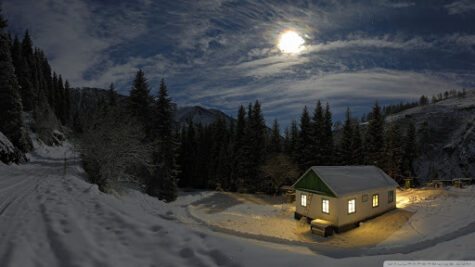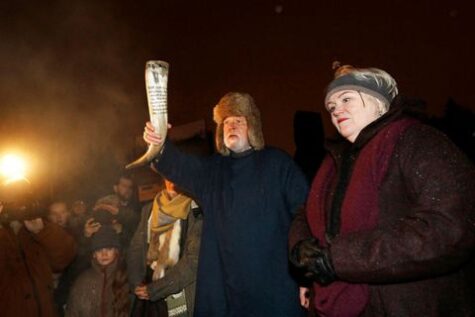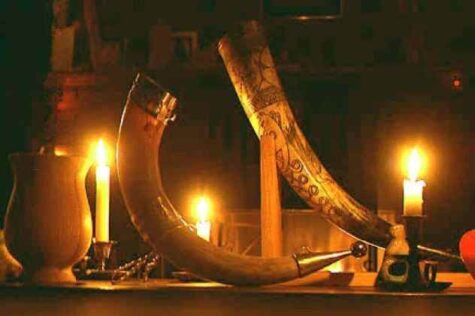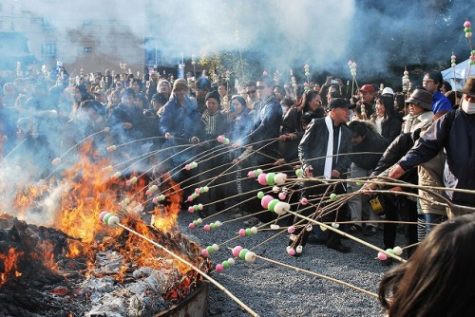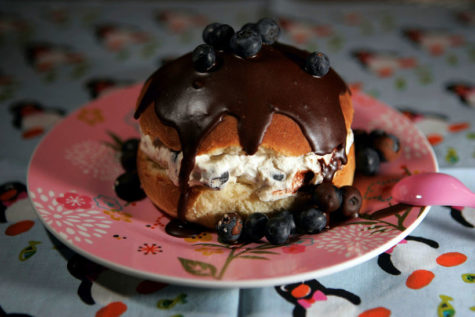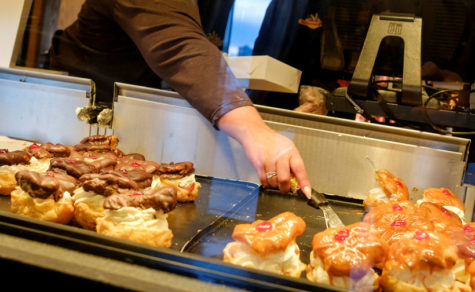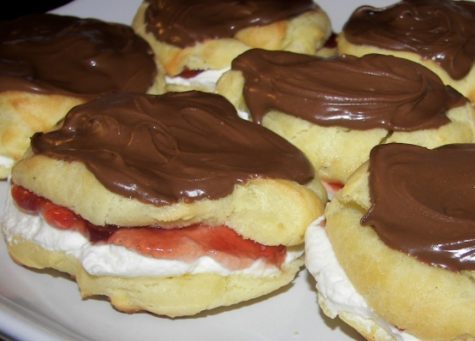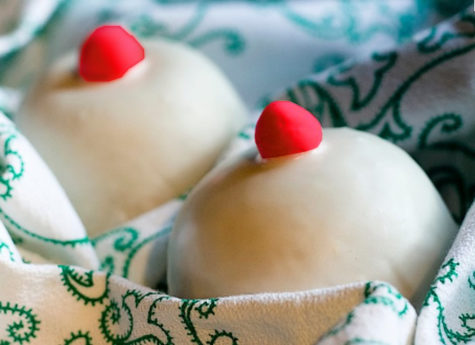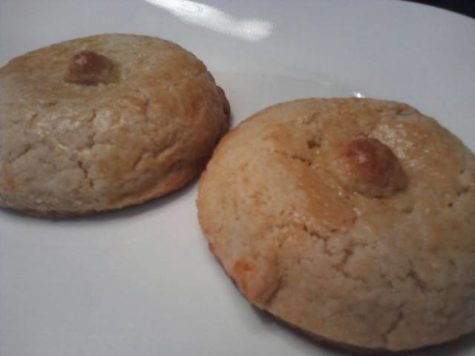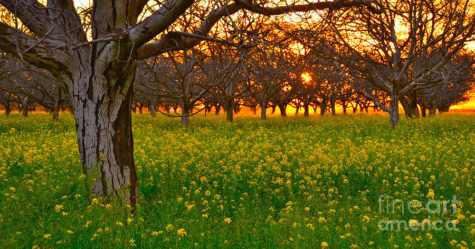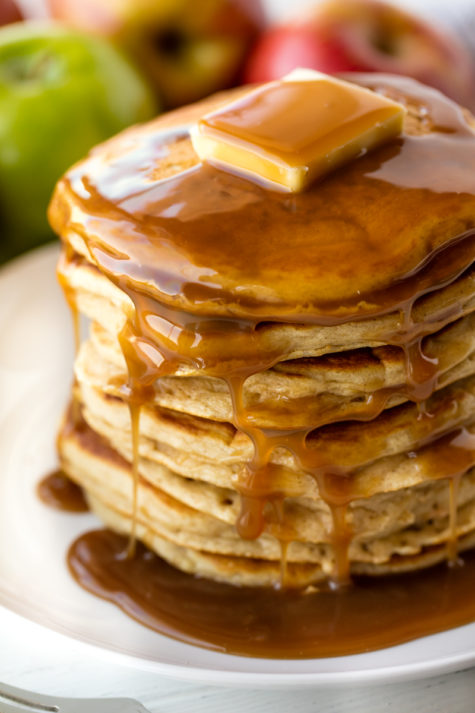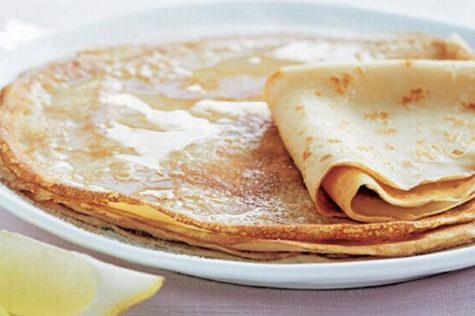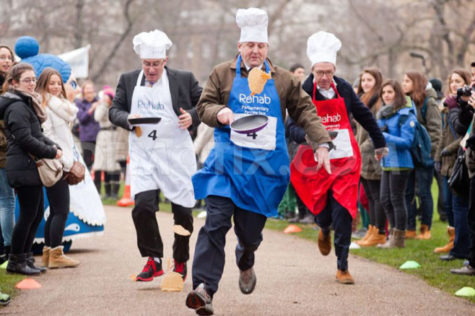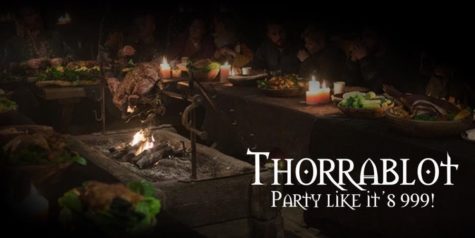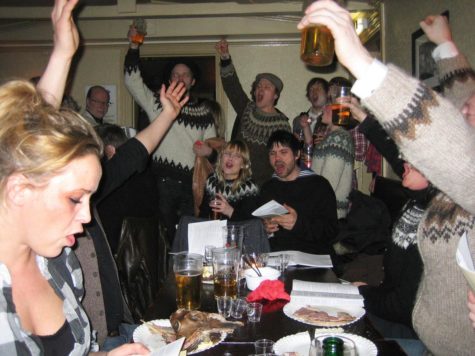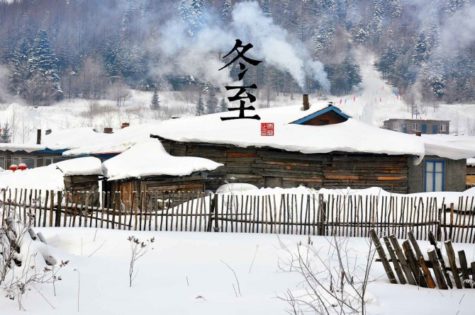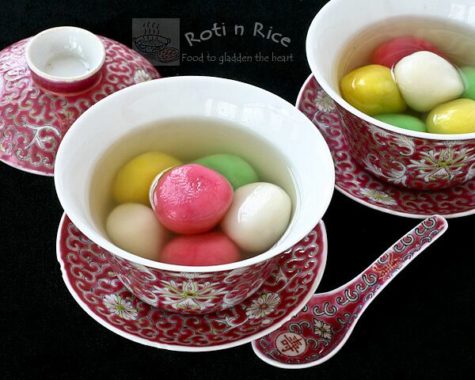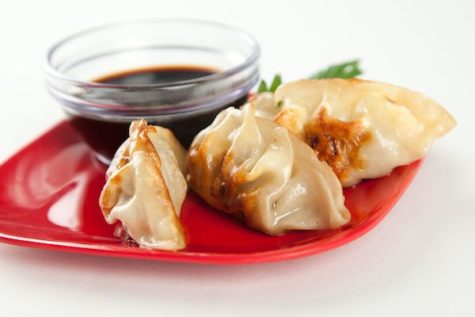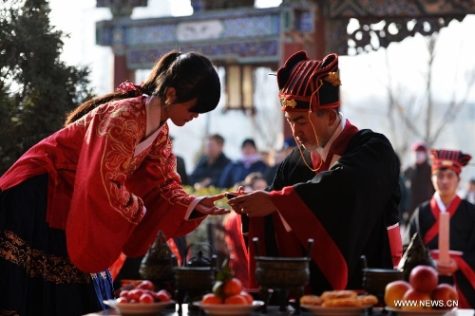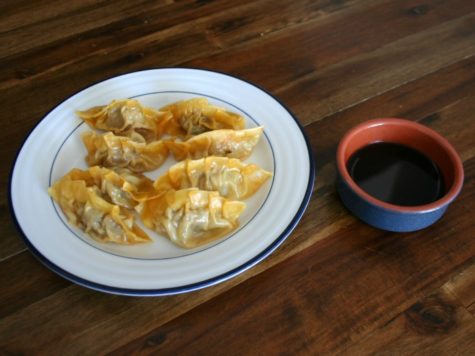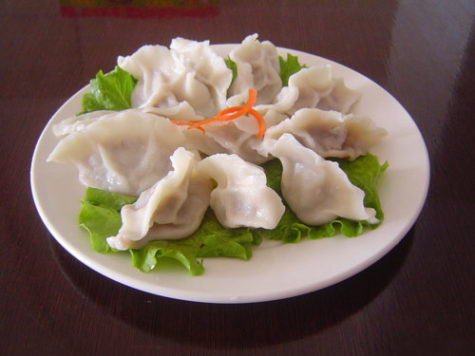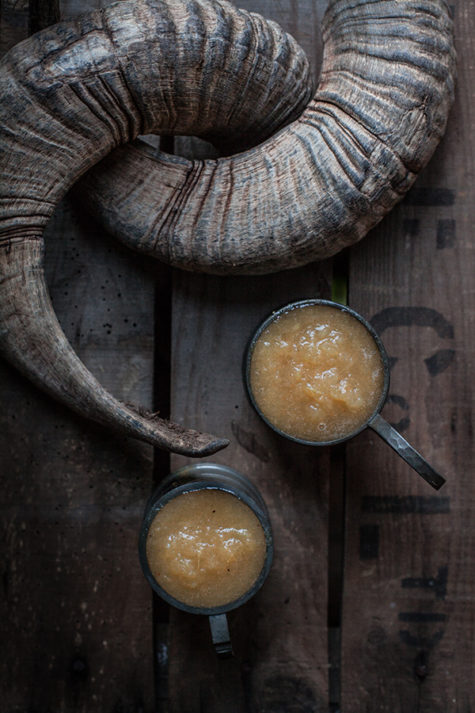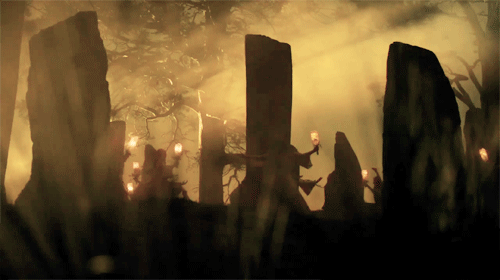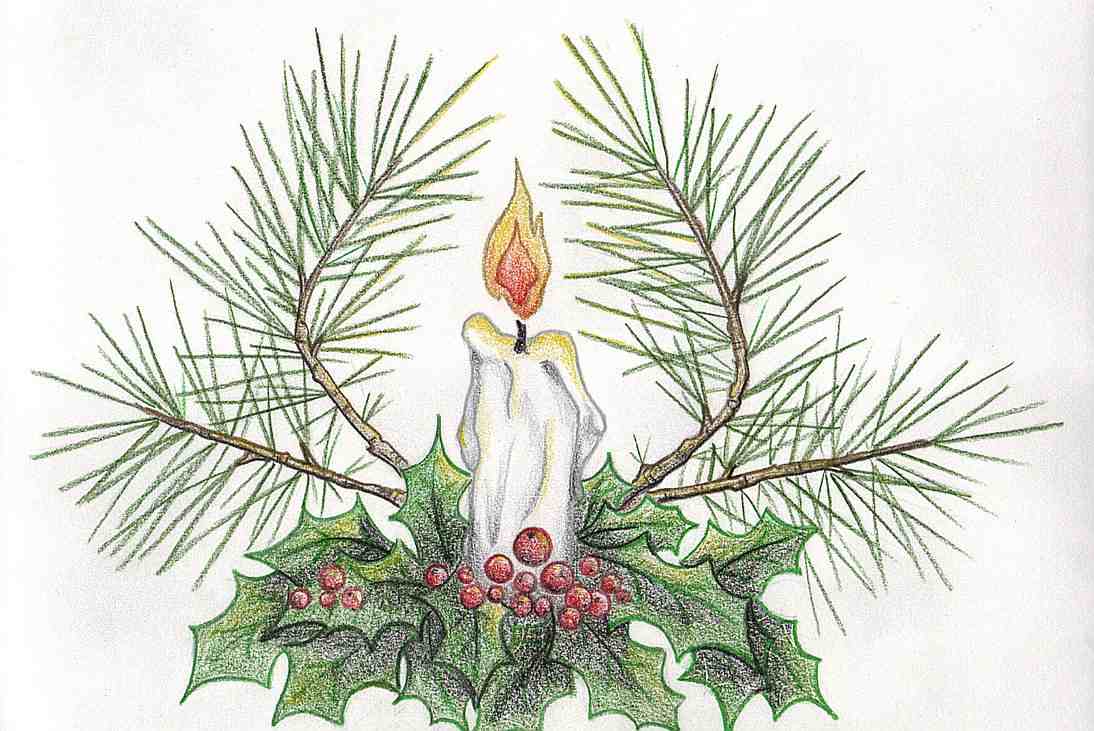Eating Together
In the Old Icelandic Calendar, winter begins on the Satyrday between Hunting 11th and 17th. This festival marks the beginning of winter, which was often celebrated around the middle of October. Winter Nights celebrates the bounty of the harvest
- Also referred to as: Vetrablot, Vetrnætr, Winterfylleth, Veturnætur, Winter Finding, and Winter Day.
Winter Nights is a more accurate term, considering that the passage of time was marked by nights, not days. An example of this can be seen from Anglo-Saxon times as it applies to the English word ‘fortnight’ as a reckoning of time for two weeks.
Just as traditional Jewish sabbat begins at sundown on Friday until sundown on Saturday… it appears that the festivities traditionally kicked off at night. This allows participants to work to prepare for the party during daylight hours too. On occasion you may even see reference to the term Winter Finding.
Some groups use this as being synonymous and interchangeable with the term Winter Nights. But others will call the harvest celebration at the autumnal equinox Winter Finding, and call the later October celebration Winter Nights instead.
Though we know the various names of the holiday, we don’t really know how people celebrated Winternights. Some people honored Freyr at this holiday, where He was given a sacrifice to thank him for the year’s harvest.
Some traditions honor Freya and the fertility and protective spirits called Disir, that She leads (often the Disir are seen as our female ancestors). Glory is given to Freya, a libation of ale, milk, or mead was poured into the soil as an offering to the Disir and the Earth itself.
We know that in Sweden, an event called an Alfarblot was held around the same time of year. It was a private event where ale was served and livestock were likely sacrificed. As Freyr is the lord of Alfheim, this event may be related to Winternights.
Some people honored Odin instead; some honored the dísir (female ancestors), some honored the alfar (elves; or male ancestors). Some people likely did a mix of all of the above.
When celebrating Winternights with a definite disir/alfar focus. Food is shared at a potluck based on recipes passed down to us from our ancestors or foods that they preferred. A sumbel is in their honor, honoring specifically those who have passed on in the last year, both animals and humans, and then sharing the stories of the food we brought, and of our ancestors of blood and of spirit. This can be an intimate, moving ritual, and a great way to start the winter season.
- A Sumbel is a formal drinking ritual composed of toasting, hails, oath-taking, the recitation of poetry or song, and other forms of verbal expression.
A Winternights sumbel might start with a round to Freyr to thank Him for the past harvest and to ask for prosperity in the days ahead. A round is included for the recently departed and for our ancestors of blood and of spirit as well.
So today we have a range of practice as it applies to this time of year. Some opt to celebrate it at the time of the autumnal equinox for sheer simplicity. But many others will instead decide to observe Winter Nights in October as that’s more in keeping with the traditional calendars.
Others split the celebration up, observing a Harvest-tide celebration in September, and then in October they will instead opt to specifically come together to honor the ancestors.
If you have children, incorporating ancestor veneration at this time helps to sync up to the Halloween and Day of the Dead décor that is on the market, and allow the children to have some similar dialogue among their peers at school. What Winternights does have in common with modern Samhain and Day of the Dead traditions, is that we both honor ancestors with their favorite foods and drink.
A Blot for Winternights
I hope all Heathens have a satisfying Winternights for both the living and the dead this year . Hail the disir! Hail the alfar! Hail Freyr!
- Hallowing:
Thunar, Guardian of Asgard and Midgard, We ask you to ward this stead well for Winternights. Hail Heimdall warder of Bifrost we ask that you hold us in your great sight.
- Purpose:
We gather to honor the Aesir and Vanir on this Winter Night and give thanks for the fruits of this past year and the Harvest we have gathered from the Earth. We also look back on the past year and measure our time that it was used wisely; to look at the future to find our way; like the Ice of time scrubbing away the impurities to leave behind the clear work.
We ask the dwellers of Asgard to give us the strength to and to help us provide for our kinsman in preparation for the long Winternachten yet to come.
- Hails:
Hail Wodan, The All Father, for your wisdom and forethought in guiding us forward through the winter to come and for the knowledge you have shared with us.
Hail Wodan!
Hail to Fro Ing for the bountiful harvest you have brought to us this eve.
Hail Fro Ing!
Hail to Freya for the love and life we hold to our hearts.
Hail Freya!
Hail to all the Ases and Wanes for the mighty work that you do.
Hail the Ases and Wanes!
And Hail to our Ancestors and Wights of the land. Hail to the All who have crossed Bifrost before.
Hail the Ancestors!
- Welcoming:
We welcome all the Ases and the Wanes. We welcome all the Wights, Alfs and Ancestors who have gone before us. We Welcome all the Wights and Landvaetter to witness this rite rightly done so that you shall see the truth in our hearts.
Heilsa all!
The time of Winternights marks the passing of Sunna farther down into the sky. This time of year marks the Mother Earth going to sleep to be rested for the coming Spring; for Fro Ing to renew the fertility of the Earth to bring forward the crops of our folk.
We look forward to Yule that is fast approaching. And we honor our ancestors that have gone before us. We look back over this past year with pride of the work rightly done. We look forward to prepare for the coming of winter, to protect our hearth and Kin from the cold of the frost giant called Winter, to open our hearths to those in need.
With this hallowed drink, brewed with the hand of Aegir the Brewer of Asgard we give our toasts:
- Wassail All!
Hail to the Aesir and Vanir!
Hail to the Alfs and the Dises!
Hail to our Ancestors!
Hail to the Landvaetter and all Wights of weal!
We now offer this sacrifice and return it to the Earth.
- Personal Hails!
Heilsa!
- The Blessing and Ending
We thank the Gods and Goddesses, the Aesir and Vanir for the gifts that we have and the gifts we may receive, May you find us fitting to receive them.
Heilsa All!
Sources:
- Asatru Utah
- Patheos
- Wyrd Designs
- Erich Shall
- Grundair Karlson
In Tabayama Village of Kitatsuru District, Yamanashi Prefecture, a (a Fire Festival dedicated to the Dōsojin or the deity of pathways and roads practiced throughout Eastern Japan. The festivity called Dondoyaki, and is celebrated between 14th and 15th January.
In this festivity, the villagers gather their Mayudama Dumplings, decorative rice dumplings made for the Japanese New Year and suspended from lines or tree tweeds. These are cooked over a bonfire and then eaten. Eating those dumplings is believed to prevent cavities, while the heat from the bonfire makes the person healthy for the rest of the year. Ashes from the fire can be used as snake and disease repellent as well as fire hazard preventative.
Bun Day, or Bolludagur, is celebrated two days before Lent in Iceland (March 4 in 2019). Children wake their parents yelling, “Bolla, Bolla, Bolla”, and try to paddle them with homemade bun bats called bolluvendir. For each hit they get a bun. Their goal is to get lots of buns!
Adults just enjoy eating these special cream-and-fruit-filled, chocolate-covered buns that are only sold or made at home for this Lenten festivity. The custom is believed to originate from Danish and Norwegian bakeries in the middle of the nineteenth century.
Every bakery in town offers traditional and more cutting-edge bollur, such as the delicious concoctions in the accompanying photograph offered up by delux cake shop Sautján sortir at the Grandi harbour area of Reykjavik.
To complete “bolludagur” people like to eat other types of “bolla” for dinner , including “fiskibolla” (fish balls) and “kjötbolla” (meatballs). Fish balls are made from minced haddock, chopped onion and egg and are fried in butter and eaten with potatoes. Meatballs in Iceland are traditionally served with red cabbage, potatoes and gravy with a dollop of jam on the side.
Not in Iceland? Try making some at home.
Bolludagur
- 1 cup water
- 1/2 cup butter
- 1/2 teaspoon salt
- 1/4 cup sugar
- 1 cup flour
- 1 teaspoon baking powder
- 1/2 teaspoon ground cardamom
- 3 large eggs
- 2 cups sweetened whipped cream
- 1/4 cup raspberry jam
- 8 oz. chocolate, melted
Preheat oven to 375ºF. Lightly grease a baking sheet. Heat water, butter, salt and sugar in a saucepan over medium heat until butter has melted. Beat in flour, baking powder, and cardamon until mixture thickens and pulls away from the side of the pan. Remove from the heat, and beat in eggs, one at a time. Drop by the heaping tablespoon onto baking sheet, leaving room in-between mounds so they can spread while cooking.
Bake 30 minutes or until golden brown. Transfer buns to wire racks to cool. When buns have cooled, slice them in half. Spread the bottoms with raspberry jam, then top with some whipped cream. Replace the top half and spread with chocolate.
Source: Web Holidays
These baked “breasts” are one of many different versions of pastries made in honor of St. Agatha, the patron saint for breast cancer. St. Agatha was tortured and martyred in 251 A.D. In addition to many other tortures, her breasts were cut off. In Catania, Sicily, and other places around the world, her feast day (Saint Agatha’s Day) is celebrated with masses in her honor, large processions and symbolic foods, such as le minni di Sant’Agata (breasts of St. Agatha) or le minni di virgini (breasts of the virgin).
Traditionally, the breasts of Saint Agatha pastries consist of a delicate outer layer of pasta frolla (shortbread dough) in the shape of a breast, stuffed with custard, zuccata, chopped almond or pistachio, covered with pink icing and topped with a half candied cherry; another version is filled with ricotta and covered with white icing and topped with a chocolate chip.
Personally, I prefer an unfrosted version (shown above) as it looks more realistic. My daughter and I actually made these, and they were delicious! We couldn’t decide which filling was better, so I’ve included both recipes. One is for a yummy orange flavored ricotta cream filling that stood up quite well to the molding process. The other is for a pastry cream that was also really yummy, but a little more difficult to work with when molding the breasts because it was so soft.
Ricotta Cream Filling – Make in advance and chill.
- 1 lb Ricotta (drained overnight)
- 2 tbsp Mascarpone
- 1/2 cup sugar
- zest of 1 orange
- 1 tbsp Grand Marnier
Cream together the ricotta, mascarpone and suger. When it is smooth and fluffy add in the orange zest and Grand Marnier. Mix well and chill until ready to use.
Pastry Cream Filling – Make in advance and chill
- 1 1/4 cups milk (whole or 2%)
- 1/2 vanilla bean, split lengthwise or 1 teaspoon pure vanilla extract or vanilla bean paste
- 3 large egg yolks
- 1/4 cup granulated white sugar
- 2 tablespoons all-purpose flour
- 2 tablespoons cornstarch
- 1/2 tablespoon liqueur (Grand Marnier, Brandy, Kirsch)
Dried Cherry, dried apricots, chocolate chips, or almonds (your choice) are used for the “nipple” of the breast shaped pastry.
In a medium-sized heatproof bowl, mix the sugar and egg yolks together. (Do let the mixture sit too long or you will get pieces of egg forming.) Sift the flour and cornstarch (corn flour) together and then add to the egg mixture, mixing until you get a smooth paste.
Meanwhile, in a saucepan bring the milk and vanilla bean just to boiling (just until milk starts to foam up.) Remove from heat and add slowly to egg mixture, whisking constantly to prevent curdling. (If you get a few pieces of egg (curdling) in the mixture, pour through a strainer.) Remove vanilla bean, scrape out seeds, and add the seeds to the egg mixture. (The vanilla bean can be washed and dried and placed in your sugar bowl to give the sugar a vanilla flavor.) Then pour the egg mixture into a medium saucepan and cook over medium heat until boiling, whisking constantly.
When it boils, whisk mixture constantly for another 30 – 60 seconds until it becomes thick. Remove from heat and immediately whisk in the liqueur (if using). (Stir in vanilla extract if using instead of a vanilla bean.) Pour into a clean bowl and immediately cover the surface with plastic wrap to prevent a crust from forming. Cool to room temperature. If not using right away refrigerate until needed, up to 3 days. Whisk or stir before using to get rid of any lumps that may have formed.
- You will also need:
Egg wash – We beat up an egg and added a small amount of water to it. You could also use the egg whites left over from the pasta frolla.
And to decide what you want to use for the “nipple” of these breast shaped pastries. We used semisweet chocolate pieces in some and raisins in others, but dried cherries, dried apricots, or almonds would work equally well.
Pasta Frolla for the Shells
- 4 cups sifted all purpose flour
- 1 cup granulated sugar
- 1/2 lb (2 sticks) salted butter
- 1 tbsp Agave Nectar
- 5 medium egg yolks, lightly beaten
- zest from 1 lemon
- 1/2 teaspoon baking powder
- 1 tablespoon Cognac
Mound flour on a flat surface and form a well or place into a bowl. Add the rest of the ingredients. Use your hands and mix it until it will shape into coarse crumbs of diverse sizes. Knead and bring the mixture together to form a ball. Fold and press with the palm of your hands; if dough is sticky, add some more flour, if it is too dry add a few tablespoons of water, to moisten it.
Do not over mix. Do not handle dough more than necessary. Form dough into a single mass and cover with a clean kitchen rag or with plastic wrap. Refrigerate dough from 30 minutes to 1 hour.
Preheat oven to 375 degrees and grease a baking sheet or line it with parchment paper.
Divide dough into 2 pieces and knead each piece briefly to compact; on a floured working surface, roll out one piece to 3/8 of an inch thick. Using a round cutter (or the rim of a glass) 3 inches across, cut 10 to 12 circles and place them 1 to 2 inches apart.on your greased baking sheet.
Knead the other piece of dough, adding in the scraps from the first. Compact it and roll it out 3/8 of an inch thick. Using a round cutter cut 10 to 12 circles slightly larger than the first set, and set aside.
Brush the first set of disks with the egg wash; place approximately 2 tablespoons of filling in the center of each one. Mound it up, but leave room around the edges. Put a chocolate chip or whatever you’ve decided to use for the “nipple” in the center on the top of the mound of filling.
Gently cover each with your second pastry circle. Carefully press it around the edges to seal it, as you do this, try to create a ‘breast-like: shape, pinching up on the pastry in the center to form a “nipple.” When it is pressed and sealed, use your round cutter to re-cut the edges. This will give your breast a nice round shape and help seal the edges even more. Remove the excess pastry dough.
Brush the formed pastries with egg wash. Bake the pastries for 15 or 20 minutes, or until they are a golden color. Place the pastries on a rack and allow them to cool before eating.
Credits:
Recipes for the Ricotta filling and the Pasta Frolla are by Sky Buletti. The pastry cream recipe was adapted from the Joy of Baking. Other fillings can be found at Sicilian Cooking Plus, and a nice tutorial on shaping the breasts can be found at Hi Cookery.
Tu Bishvat occurs on the 15th day of the Hebrew month of Shevat. In 2019, this date falls on January 20. Tu Bishvat (Tu B’Shevat), also called “Rosh HaShanah La’Ilanot” (New Year of the Trees) is kind of like a birthday for all trees. Trees planted before this day, even by one day, will turn a year older on Tu Bishvat. Traditionally fruit from trees may not be eaten for the first four years, so the age is important.
Here are some simple ways to celebrate The New Year of the Trees
- Pick fresh fruits and vegetables at a local farm.
- Plant trees, seeds, or start an herb garden.
- Build a birdhouse to hang in a tree.
- Eat the seven significant species of the land of Israel: wheat, grapes, barley, figs, pomegranates, olives, and dates.
- Organize a park clean-up to collect litter.
- Make something for your home with reclaimed wood.
- Take some time to research your own ancestry and assemble your family tree.
- Commit to recycling paper goods. If you don’t already have one, get a separate bin and you’re all set!
- Host a Tu B’Shevat Seder.
In the 16th century, the kabbalist Rabbi Yitzchak Luria of Safed developed a Tu Bishvat seder. The fruits and trees of Israel were given symbolic meaning. Eating ten specific fruits and drinking four cups of wine in a specific order while reciting blessings would bring people and the world closer to spiritual perfection.
How to Lead a Tu Bishvat Seder
Set up your table as for Passover: white or other nice tablecloth, good dishes, flowers, wine, and juice. There is no requirement to light candles, but scented candles add a nice touch and a festive glow. Either one person can lead the seder, reciting each reading and making the blessings, or everyone can take turns.
The directions concerning which fruit to locate and the mix of the wines should be read aloud. As each piece of fruit and each cup of wine is being considered and blessed, that object is held by the reader. After each blessing, the participants taste the fruit or sip the wine.
Hand Washing
Fill a large bowl with flower-scented water and float a small cup in it. Carry the bowl from person to person or set up a washing station in a corner. Feel how nice it is to place your hands over the bowl and have someone pour warm water over your fingers. Have towels ready.
Say this blessing
Barukh ata Adonai,
Eloheinu Melekh ha-olam,
asher kidshanu b’mitzvotav,
v’tzivanu al netilat yadayim.
Blessed are You,
Source of all life,
Who commands us to ritually wash our hands.
Note: Some may choose to forego this blessing, since it is traditionally recited upon washing the hands before eating bread, which is not eaten here.
First reading
Reader: And God said: Let the earth put forth grass, herb-yielding seed, and fruit-tree-bearing fruit after its own kind, wherein is the seed thereof, on the earth. (Genesis 1:11)
Reader: In the 16th century in northern Israel, in the spiritual town of Tzfat (Safed), the Jewish mystics created the Tu Bishvat seder. They recognized the many and varied dimensions of God’s creation and used the fruits of Israel to symbolize their existence.
The First Cup of Wine
This cup of white wine or grape juice symbolizes winter and the mystical dimension of atzilut, or emanation, at which God’s energy infused the creation process with initial life.
Barukh ata Adonai,
Eloheinu Melekh ha-olam borei peri ha-gafen.
Blessed are you,
Source of all life,
Creator of the fruit of the vine.
Reader: For Adonai your God is bringing you into a good land. A land of brooks of water, of fountains and depths springing forth in valleys and hills, a land of wheat and barley and vines and fig trees and pomegranates, a land of olive trees and honey, a land wherein you shall eat without scarceness, you shall not lack anything in it; a land whose stones are iron and out of whose hills you may dig brass. And you shall eat and be satisfied, and bless God for the good land, which is being given unto you (Deuteronomy 8:7-10).
The First Fruit
Fruit that is hard on the outside and soft on the inside, such as walnuts, coconuts or almonds. The hard shell symbolizes the protection that the earth gives us and reminds us to nourish the strength and healing power of our own bodies.
Barukh ata Adonai,
Eloheinu Melekh ha-olam,
borei peri ha-etz.
Blessed are You,
Source of all life,
Creator of the fruit of the tree.
The Second Cup of Wine
This cup of wine or grape juice is mostly white, with a little red mixed in, to symbolize the passing of the seasons and the mystical concept of formation and birth, often associated with water.
Barukh ata Adonai,
Eloheinu Melekh ha-olam,
borei peri ha-gafen.
Blessed are You,
Source of all life,
Creator of the fruit of the vine.
Reader: Blessed shall you be in the city, and blessed shall you be in the field. Blessed shall you be in the fruit of your body, and the fruit of your land, and the fruit of your cattle, and the young of your flock. Blessed shall you be in your basket and your kneading trough. Blessed shall you be when you come in and blessed shall you be when you go out (Deuteronomy 28:36).
The Second Fruit
This fruit is soft with a pit in the center — olives or dates [or peaches, apricots, etc.] — and symbolizes the life-sustaining power that emanates from the earth. It reminds us of the spiritual and emotional strength that is within each of us.
Barukh ata Adonai,
Eloheinu Melekh ha-olam,
borei peri ha-etz.
Blessed are You,
Source of all life,
Creator of the fruit of the tree.
The Third Cup of Wine
This cup of wine is mostly red with a little of white mixed in and symbolizes once again the change of seasons and the mystical concept of beriah, or creation.
Barukh ata Adonai,
Eloheinu Melekh ha-olam,
borei peri ha-gafen.
Blessed are You,
Source of all life,
Creator of the fruit of the vine.
Reader: Then God formed the human from the dust of the ground, and breathed into the nostrils the breath of life; and the human became a living soul (Genesis 2:7).
The Third Fruit
This fruit is soft throughout and is completely edible, such as figs, grapes, and raisins. This type symbolizes God’s omnipresence and our own inextricable ties with the earth.
Barukh ata Adonai,
Eloheinu Melekh ha-olam,
borei peri ha-etz.
Blessed are You,
Source of all life,
Creator of the fruit of the tree.
Serve a Vegetarian Dinner
A favorite is vegetarian lasagna and noodle kugel with fruit. Eat other exotic fruits that are placed around the table.
The Fourth Cup of Wine
This cup is all red, symbolizing the mystical concept of fire and the idea that within all living things dwells a spark of God.
Reader: And the angel of God appeared to him in a flame of fire out of the midst of a bush; and Moses looked, and behold, the bush burned with fire and the bush was not consumed (Exodus 3:2).
The Fourth Fruit
This has a tough skin on the outside but sweet fruit within–mangos, bananas, avocados, or sabra, a desert pear–and symbolizes the mystery of the world and our study of Torah. We are constantly seeking to uncover her secrets, and are continually nourished by her fruits.
Sources:
Different countries and cultural traditions have different names for this day. Popular names include Pancake Day or Pancake Tuesday, Mardi Gras, Tłusty Czwartek, Fasnacht Day, Tuesday of Carnival, Fat Tuesday, and Shrove Tuesday. Shrove Tuesday is the last day of Shrovetide.
Pancake Tuesday always falls 47 days before Easter Sunday, so the date varies from year to year and falls between February 3 and March 9. In 2019 Pancake Tuesday will fall on March 5th.
During Lent, which begins the next day (Ash Wednesday), rich foods are not eaten; therefore the day before pancakes, donuts and other treats are cooked to use up the ingredients in the house. Pancake Tuesday was the last opportunity to use up eggs and fats before embarking on the Lenten fast and pancakes are the perfect way of using up these ingredients.
Pancakes are eaten with a sprinkling of sugar, and they are served with syrup. The day celebrated by excessive pancake devouring is observed in the United Kingdom, Ireland, Australia, Canada, Denmark, France, Poland, Sweden, and in parts of the United States.
Today just might be the perfect day to take a look at the following posts about pancakes:
What are pancakes?
A pancake is a thin, flat cake, made of batter and fried in a frying pan. A traditional English pancake is very thin and is served immediately. Golden syrup or lemon juice and caster sugar are the usual toppings for pancakes.
The pancake has a very long history and featured in cookery books as far back as 1439. The tradition of tossing or flipping them is almost as old: “
And every man and maide doe take their turne,
And tosse their Pancakes up for feare they burne.”
~Pasquil’s Palin, 1619.
The ingredients for pancakes can be seen to symbolize four points of significance at this time of year:
- Eggs ~ Creation
- Flour ~ The staff of life
- Salt ~ Wholesomeness
- Milk ~ Purity
To make 8 or so pancakes you will need the following:
- 8oz plain flour,
- 2 large eggs,
- 1 pint milk,
- salt.
Mix all together and whisk well. Leave to stand for 30 minutes. Heat a little oil in a frying pan, pour in enough batter to cover the base of the pan and let it cook until the base of the pancake has browned. Then shake the pan to loosen the pancake and flip the pancake over to brown the other side.
Pancake Races
In the UK, pancake races form an important part of the Shrove Tuesday celebrations – an opportunity for large numbers of people, often in fancy dress, to race down streets tossing pancakes. The object of the race is to get to the finishing line first, carrying a frying pan with a cooked pancake in it and flipping the pancake as you run.
The most famous pancake race takes place at Olney in Buckinghamshire. According to tradition, in 1445 a woman of Olney heard the shriving bell while she was making pancakes and ran to the church in her apron, still clutching her frying pan. The Olney pancake race is now world famous. Competitors have to be local housewives and they must wear an apron and a hat or scarf.
Each contestant has a frying pan containing a hot pancake. She must toss it three times during the race. The first woman to complete the course and arrive at the church, serve her pancake to the bellringer and be kissed by him, is the winner.
At Westminster School in London, the annual Pancake Grease is held. A verger from Westminster Abbey leads a procession of boys into the playground where the school cook tosses a huge pancake over a five-metre high bar. The boys then race to grab a portion of the pancake and the one who ends up with the largest piece receives a cash bonus from the Dean.
Source: Historic UK
Thorrablot (Þorrablót) was a sacrificial midwinter festival offered to the gods in pagan Iceland of the past. It was abolished during the Christianization of Iceland, but resurrected in the 19th century as a midwinter celebration that continues to be celebrated to this day. The timing for the festival coincides with the month of Thorri, according to the old Icelandic calendar, which begins on the first Friday after January 19th (the 13th week of winter). Or, on the 19th when it falls on a Friday.
Origins of the name “Thorri” are unclear but it is most likely derived from Norwegian king Thorri Snærsson, or Thor the God of Thunder in the old Nordic religion.
Today Thorrablot are common events among Icelanders everywhere and can be anything from an informal dinner with friends and family to large organised events with stage performances and an after-dinner dance. These large Thorrablot celebrations are usually arranged by membership associations, associations of Icelanders living abroad, and as regional festivals in the countryside.
On this occasion, locals come together to eat, drink and be merry. Customary, the menu consists of unusual culinary delicacies, known as traditional Icelandic food, which consist of different versions of animal parts, either fermented in lactic acid, rotten, salted or soured. These include rotten shark’s meat (hákarl), boiled sheep’s head, (svið) and congealed sheep’s blood wrapped in a ram’s stomach (blóðmör)! This is traditionally washed down with some Brennivin – also known as Black Death – a potent schnapps made from potato and caraway.
Even though most Icelanders do indulge in the traditional foods at least once a year, not many foreigners, nor the younger generation of Icelanders like the food.
After the Thorrablot dinner traditional songs, games and story telling are accompanied by dancing and in true Icelandic style continue until the early hours of the morning! If you fail to receive a personal invitation to a family feast, local restaurants will often add Thorrablot color and taste to their menus.
The Dōngzhì Festival or Winter Solstice Festival is one of the most important festivals celebrated by the Chinese and other East Asians during the Dōngzhì solar term (winter solstice) on or around December 22 when sunshine is weakest and daylight shortest.
The origins of this festival can be traced back to the yin and yang philosophy of balance and harmony in the cosmos. After this celebration, there will be days with longer daylight hours and therefore an increase in positive energy flowing in. The philosophical significance of this is symbolized by the I Ching hexagram fù (復, “Returning”).
To really get a feel for the Dōngzhì Festival, you have to imagine hard, rural living during a gray Han Dynasty winter more than 2,000 years ago.
Now picture a family meal at a table set with hearty, warming foods, raising the hopes for spring’s arrival. That’s the spirit of the Dōngzhì Festival.
The Dōngzhì Festival marries the winter solstice with nature’s harmonious balance of yin and yang energy. From this point forward, dongzhi (i.e. the extreme of winter) and the negative yin qualities of darkness and cold give way to the positive yang qualities of light and warmth. In other words, take heart — spring will come.
Traditional activities
Traditionally, the Dōngzhì Festival was a day to regroup with a family get together before tackling the last leg of winter. Today, with survival less of a daily concern and no time off granted, the Dōngzhì Festival is celebrated mostly with a family meal full of warm, hearty foods. One activity that occurs during these get togethers (especially in the southern parts of China and in Chinese communities overseas) is the making and eating of tangyuan, or balls of glutinous rice, which symbolize reunion.
Tangyuan are made of glutinous rice flour and sometimes brightly colored. Each family member receives at least one large tangyuan in addition to several small ones. The flour balls may be plain or stuffed. They are cooked in a sweet soup or savory broth with both the ball and the soup/broth served in one bowl. It is also often served with a mildly alcoholic unfiltered rice wine containing whole grains of glutinous rice (and often also Sweet Osmanthus flowers), called jiuniang.
- Here’s a recipe for Glutinous Rice Balls
In northern China, people typically eat dumplings on Dōngzhì. It is said to have originated from Zhang Zhongjing in the Han Dynasty. On one cold winter day, he saw the poor suffering from chilblains on their ears. Feeling sympathetic, he ordered his apprentices to make dumplings with lamb and other ingredients, and distribute them among the poor to keep them warm, to keep their ears from getting chilblains.
Since the dumplings were shaped like ears, Zhang named the dish “qùhán jiāoěr tāng” (祛寒嬌耳湯) or dumpling soup that expels the cold. From that time on, it has been a tradition to eat dumplings on the day of Dōngzhì.
- Here’s a recipe for Lamb Dumplings
Old traditions also require people with the same surname or from the same clan to gather at their ancestral temples to worship on this day. There is always a grand reunion dinner following the sacrificial ceremony.
The festive food is also a reminder that we are now a year older and should behave better in the coming year. Even today, many Chinese around the world, especially the elderly, still insist that one is “a year older” right after the Dōngzhì celebration instead of waiting for the Chinese New Year.
In Taiwan
To Taiwanese people, the festival in winter also plays a very important role. It is also a tradition for Taiwanese to eat tangyuan on this day. They also use the festive food as an offering dish to worship the ancestors.
In an interesting twist, in accordance with ancient Taiwanese history, many people take some of the tangyuan that have been used as offerings and stick them on the back of the door or on windows and tables and chairs. These “empowered” tangyuan supposedly serve as protective talismans to keep evil spirits from coming close to children.
 In addition to following some of the customs practiced in China, the people of Taiwan have their own unique custom of offering nine-layer cakes as a ceremonial sacrifice to worship their ancestors.
In addition to following some of the customs practiced in China, the people of Taiwan have their own unique custom of offering nine-layer cakes as a ceremonial sacrifice to worship their ancestors.
- Here’s a recipe for Nine Layer Cake
These cakes are made using glutinous rice flour in the shape of a chicken, duck, tortoise, pig, cow or sheep, and then steamed in different layers of a pot. These animals all signify auspiciousness in Chinese tradition.
Another interesting custom in Taiwan is that many people take invigorating tonic foods during this particular winter festival. To the Taiwanese, winter is a time when most physical activities should be limited and you should eat well to nourish your body. This practice follows the habits shown by many animals which follow the law of nature and hibernate throughout winter months to rejuvenate and to preserve life. In order to fight cold temperatures, it is necessary to eat more fatty and meaty foods during winter when your body can better absorb the rich and nutritional foods at this time due to a slower metabolic rate.
Since Dōngzhì is the “Extreme of Winter”, Taiwanese regard it as the best time of the year to take tonic foods. Some of the most widely popular winter tonic foods enjoyed by Taiwanese to fight cold and strengthen the body’s resistance are mutton hot pot and ginger duck hot pot. Other foods like chicken, pork and abalone are also common materials used in making tonic foods with nurturing herbs such as ginseng, deer horn and the fungus cordyceps.
Source: Wikipedia
In northern China, people eat lamb dumplings for the Dōngzhì Festival, a tribute to the Han Dynasty physician, Zhang Zhongjing, who served this warming food to poor farmers suffering from frostbite during one particularly cold winter.
Celebrating the Dōngzhì Festival is all about understanding the simple enjoyment of a warm, fortifying meal on a cold winter night in ancient China. It’s that same feeling you had as a child when you came in from a day of playing in the snow to a cup of hot cocoa or a bowl of steaming soup.
Against that backdrop, this lamb dumpling recipe is the perfect match. The rustic taste of lamb, combined with a black vinegar and chili dipping sauce, gives these dumplings a distinctly northern Chinese flavor. A perfect meal to serve during the depths of winter.
In contrast to traditional pork dumplings, which can be fried as potstickers, these lamb dumplings are either steamed or boiled in thin gow gee dumpling wrappers. The boiled dumplings are soft and slippery, while the steamed dumplings are more elastic, but both versions produce a satisfying broth that makes the dumplings feel like xiao long bao.
If your Chinese market is in a predominantly Cantonese neighborhood, you may find that it doesn’t carry lamb. In that case, a halal market will probably be your next best bet. Make sure to pick a relatively fatty ground lamb mix, so that your dumplings produce a rich broth.
Lamb Dumplings Recipe
Ingredients
- 10 ounces Chinese cabbage
- 1/2 teaspoon salt
- 1 pound ground lamb
- 4 tablespoons Shaoxing rice wine
- 4 tablespoons dark soy sauce
- 1 tablespoon dark soy sauce
- 1 tablespoon ginger
- 4 green onions
- 1 teaspoon cumin
- 80 gow gee dumpling wrappers
Directions
1. Finely mince the cabbage in a food processor. Place in a large bowl, sprinkle with the salt and set aside for 10 minutes.
2. Add the lamb, ginger, green onion, soy sauce, rice wine and cumin to the food processor. Pulse 5 times until the ingredients are combined well. Set aside.
3. Place the cabbage on a kitchen cloth, twist the top and squeeze out as much liquid as you can. Add the dry cabbage to your pork mixture and combine in the food processor with another 5 pulses.
4. Spoon 1 rounded teaspoon of the filling mixture in the center of each dumpling wrapper. To wrap a dumpling, dab water along the inside edge of the wrapper, fold in half to form a semicircle enclosing the filling, then seal the edges together to stick. Finally, fold 5-6 small pleats around the top edge of the dumpling. Repeat until all of your dumplings are done.
5. Separate the dumplings you’ll need for your meal and then freeze the rest in a heavy plastic bag for later.
6. There are two easy ways to cook dumplings.
– To boil: Bring a large pot of water to a boil. Add 15 dumplings to the pot and boil for 9 minutes, stirring occasionally to prevent them from sticking to the bottom of the pot. Remove the dumplings from the heat and drain, repeating with any remaining dumplings.
– To steam: Place a bamboo steamer in a large pot or wok and heat water to a boil. Place 15 dumplings in a single layer in the bamboo steamer, cover and steam for 9 minutes. Remove the dumplings from the heat.
7. Serve immediately with chili sauce, black vinegar or soy sauce for dipping.
Makes: 70-80 Dumplings | Prep Time: 1 Hour | Cook Time: 10 Minutes
Source: Chinese American Family
On the first of November, it was an ancient Celtic practice to indulge in a sort of feast, which was called la mas ubhal, the day of the apple fruit, because on that occasion, roasted apples were bruised and mixed in ale, milk, or by those who could afford it, in wine. This is the origin of lamb’s wool.
About Lambs Wool:
The basic recipe for lambswool is as follows: Apples are roasted in a pan on the fire, or on a string over the fire, until they sizzle. They are then dropped, still hot, into the warmed, spiced, sweetened ale.
In Gerard’s Herbal (1633) it is described as a drink of warmed, spiced ale or cider, in which bob roasted apples: ‘sometimes, eggs or cream, or both, are whisked in, and sometimes it is served poured over small fruit cakes.’
It derives its name from the day which is dedicated to the Angel presiding over fruits and seeds, which was originally called “La Maso bal” which was corrupted to Lamb’s Wool. According to Nell Heaton writing in the late 1940’s. Alternatively, the name could simply be a reference to the fluffy appearance of the pulp of the roast apples, bobbing about in the warm brew.
From: The Scotish Gaël and Celebration
